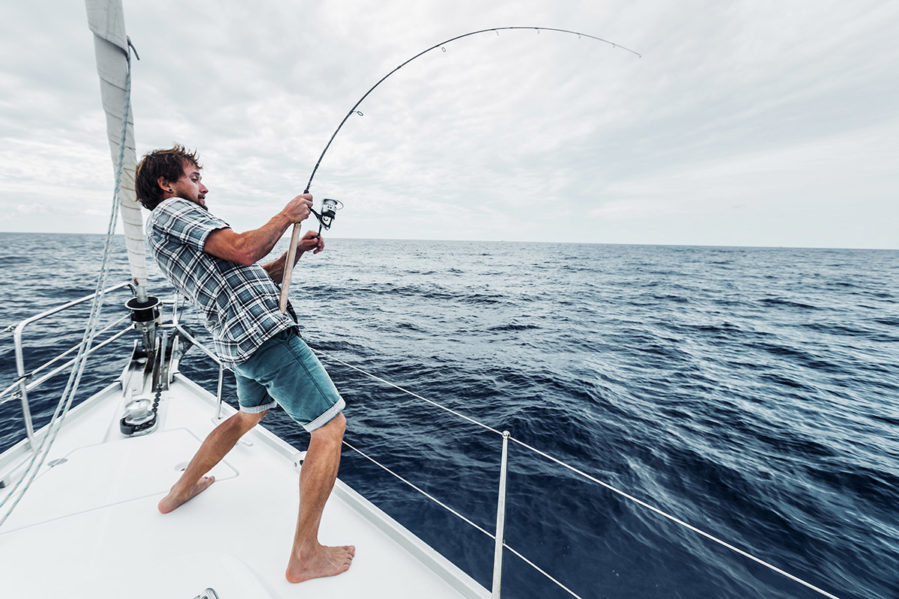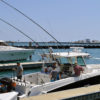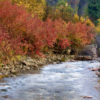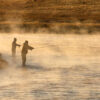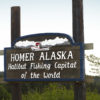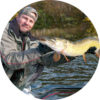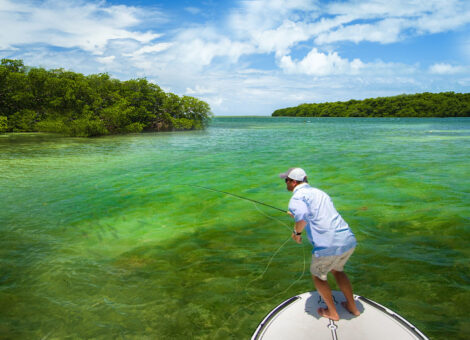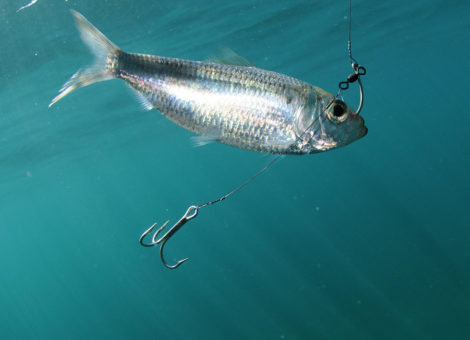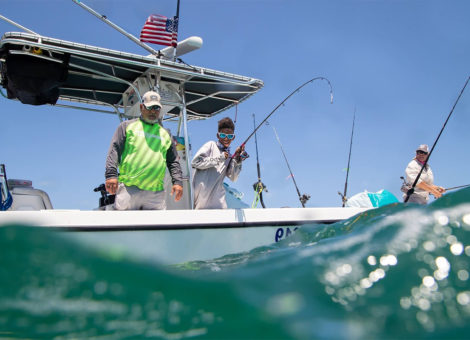For anglers used to freshwater, saltwater fishing can be a refreshing and exciting challenge. The open water of the ocean and the larger, stronger species of fish that live within it create a formidable test an angler’s skills, technique, and endurance. But if you’re able to rise to the challenge, you might just find yourself hooked on saltwater fishing for life.
The differences between freshwater and saltwater habitats require an angler to prepare and practice with a separate set of gear and a specialized set of skills. This guide will get you up to speed on what you need to know before you ever take your boat out on the water.
Regulations and Licenses
Step one is to look into the local laws for saltwater fishing. Will you need to have a fishing license on your person? Are there and areas or fish species that have seasonal or daily limits? Are there any fees or licenses needed to fish off public piers? The last thing you want is to have your day cut short and your enthusiasm torpedoed by a heavy fine or citation.
Tides and Tidal Currents
Next, start to learn the tides. This is important for basic safety reasons, but will also have an effect on how and where you set up your gear on a sandbar, pier, or boat. You don’t want to get caught high and dry, or swamped out, by an unexpected change in water levels. When you’re fishing out on open water, plan to be in position an hour before high tide, and expect the fish to be active and striking until about an hour after the tide reaches its peak.
You should also know how the tides behave in inshore waters like channels and inlets. In these areas, the tides can run more quickly or more slowly than in open water, or in the exact opposite direction. Fish will often follow these unique currents, so knowing them will help you target more effectively, and the amount of fish available within inlets and channels will often be less when the water is low.
Saltwater Fishing Gear
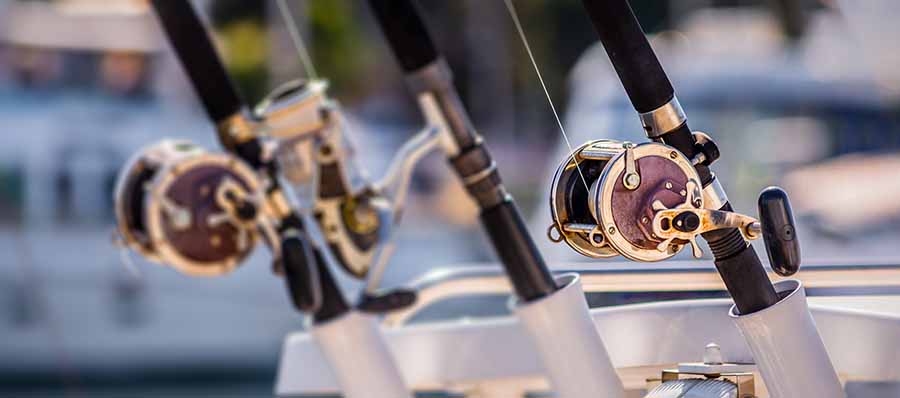
Saltwater fishing requires a different set of heavy-duty gear. Your saltwater gear will also require special care, as salt is corrosive to metal and over time will cause rust and weakness on your guidelines and reels. After you’ve come home from a day at sea, it is essential to hose down your rods and lines with fresh water. And you should lubricate your reel at least once or twice a season, especially at the end of the season. When inshore fishing, keep your reel from touching sand whenever possible.
Remember that the sea is a whole different beast than lakes, rivers, and streams, and the power of the large fish, the waves, and the tides will take a toll on your equipment. Expect to invest in some heavy duty gear that’s tough enough to take some punishment.
Rods and Reels
When it comes to picking out the right saltwater reel for you, make your choice based where you plan to fish, what you hope to catch, and whether you choose to try catching it by using bait casting, trolling, or metal jigs. Here are a few general guidelines:
- A shorter rod provides more power during a battle with a hooked fish, but a longer rod will give a longer cast.
- A rod’s “power” is the amount of weight it is able to life without breaking.
- Low-speeds reels have more power for battles, and high-speed reels work better with fast baits.
- A spinning reel is a better investment than a stationary reel, as it will give you long casts without building a bird’s nest.
- Your reel should match you rod’s line weight.
- When selecting your rod, match the weight of its lure to the size or weight of the saltwater bait you plan to use.
Clothing
When it comes to saltwater fishing, you’ll need to dress for the elements:
Foul-Weather Gear, like waterproof rain jacket and boots.
Breathable Saltwater Waders for warm water (65 degrees and up); neoprene waders for cold waters.
Sunscreen plus a long-sleeved shirt and long pants—protect yourself from reflected glare off the water.
Polarized Sunglasses, which will protect your eyes from UV rays and also help you see trough the surface of the water.
Cold-Weather Gear, including neoprene gloves and windproof and waterproof outer layer and hat.
Fishing Line
Monofilament line has a long history of use in saltwater fishing, but when fishing in 200 feet of water or more, braid line is more effective. Braid line is heavier than monofilament, will sink more quickly especially when used with a weighted jig, and is less resistant to currents. Make sure to regularly check your lines for weakness, especially monofilament, which you will need to cut or change on a regular basis to make sure that it maintains its poundage test.
Hooks
Match the size of your hook to the size of your bait. Live bait is particularly appealing to saltwater gamefish as it swims around on the end of the hook. If using chunked bait, a J hook will hold it fast. If you don’t plan to hold on to your catch, circle hooks are a good option for easy removal—they get caught in the mouth of the fish instead of its throat and don’t cause any damage to its tissues.
Tools
There are four essential saltwater fishing tools that you should make sure you have on all excursions:
- Saltwater Gaffs and Nets to land the fish. There are also helpful when fishing catch-and-release.
- Saltwater Pliers and Scissors to secure knots, extract hooks, and snip wire. You should also learn to tie saltwater fishing knots.
- Saltwater Fishing Knives for cleaning fish and cutting up bait.
- A Saltwater Hook Remover to make removing a quicker, smoother process.
Saltwater Fishing Bait
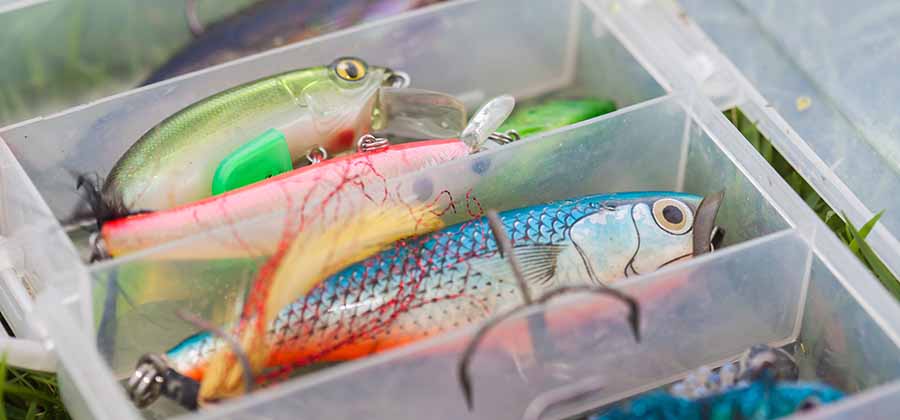
The right bait to use in saltwater will depend on the usual prey of the fish you want to catch. The three aspects of that prey to identify are scent, sound, and movement. The you know these three things you should be able to pinpoint a bait type that will be able to trick the fish into believing tis the real thing. Once you have that, you can factor in the area where you plan to fish and decide between live and artificial bait.
Brightly colored lures will be more visible in the dark water and the waves. Over time artificial lures can become less vibrant because of the salt-water, so plan to replace them more often than you do your freshwater lures. Lures that make noise are good to deploy in moving waters. A loop knot will allow the bait to move in a way that seems loose and natural. And when using live bait instead, take good care of it so that it remains attractive to fish once it makes it to your hook.
Types of live saltwater bait include:
- Bait Fish
- Crabs
- Clams
- Mussels
- Shrimp
- Squid
Types of artificial saltwater bait include:
- Lead-Headed Jigs which mimic live bait.
- Metal Jigs which sink and bounce across the ocean floor.
- Poppers which will skip and splash across the surface.
- Plug Fishing Lures which resemble a swimming fish.
- Spoon Fishing Lures which catch on the water to create fish-like flash and movement.
- Spinnerbaits which use sound and movement to trigger the fish’s senses.
- Soft Plastic Lures which have a lot of versatility.
Always remember that to pick the best bait, you should identify the usual prey of the fish you’re after and seek to imitate it with your lure or bait.
Fishing Methods

Every species of fish in the sea is different, and saltwater anglers have invented and developed a variety of techniques to target and land them. Some of the best methods for productive saltwater fishing include:
- Bait Casting
- Bottom Bouncer
- Bottom Fishing
- Cast and Retrieve Fishing
- Chumming
- Drift Fishing
- Fly Fishing
- Fresh Water Trolling
- Jigging
- Live Lining and Trolling
- Night Fishing
- Saltwater Jigging
- Saltwater Trolling
- Spinning
- Spooning
- Still Fishing
- Surf Casting
- Surface Poppers
- Top Water Fishing
- Trolling
- Upstream Casting
Location
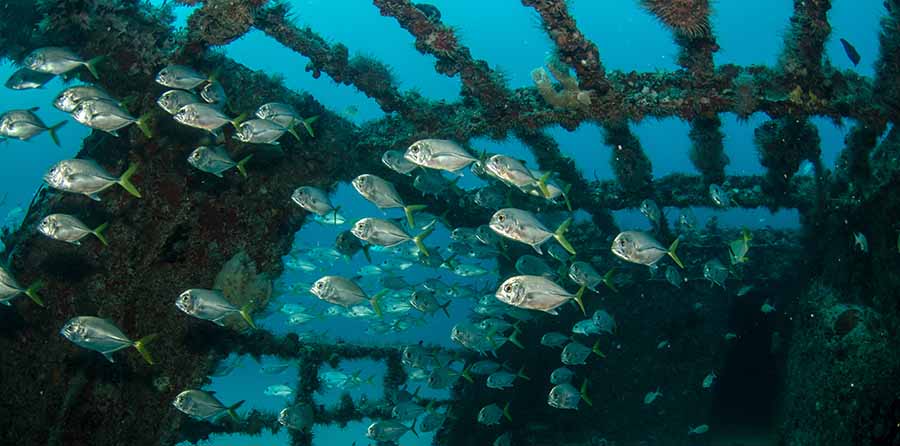
In order to catch a fish, you need to know where it is. Using up-to-date marine charts will help you locate the hot spots preferred by your target fish. This is especially helpful to new saltwater anglers, and will save you time and energy while also helping you to get a sense of the lay of the land (or the water). Also make it a priority to search out the usually habitat of your target fish.
These are saltwater habitats where fish often dwell:
- Backwater Fishing
- Baitfish Patches
- Bays
- Bays and Estuaries
- Birds
- Breakers
- Channel Entrances
- Channels and Holes
- Coastal Waters
- Colliding Waves
- Convergence Zones
- Deep Shore Water
- Floating Foam and Debris
- Hills and Humps
- Holes
- Jetties and Breakers
- Lily Pads
- Man-made Structures
- Mangroves
- Oyster Bars and Grass Beds
- Points and Break Lines
- Potholes
- Reefs
- Reefs, Wrecks and Shoals
- Rip Tides
- Rocky Sea Floor
- Saltwater Inlets
- Saltwater Tides
- Saltwater Weed Beds
- Schools
- Shallow and Shoals
- Shore Points
- Shoreline Shallows
- Surf and Shore
- The Open Ocean
- Tidal Flats
- Troughs
- Mangroves
Get Advice
A good local angler is going to have more valuable information than any general guide. Once you know what kind of fish you’re after and what area you’re going to be fishing in, spend some time asking questions at local bait and tackle shops, the pier, or the shore. Learn what baits and techniques that the locals are using to get strikes, but also remember that fishing is often a matter of preference and finesse, so don’t be afraid to try something different if you feel the need to.


